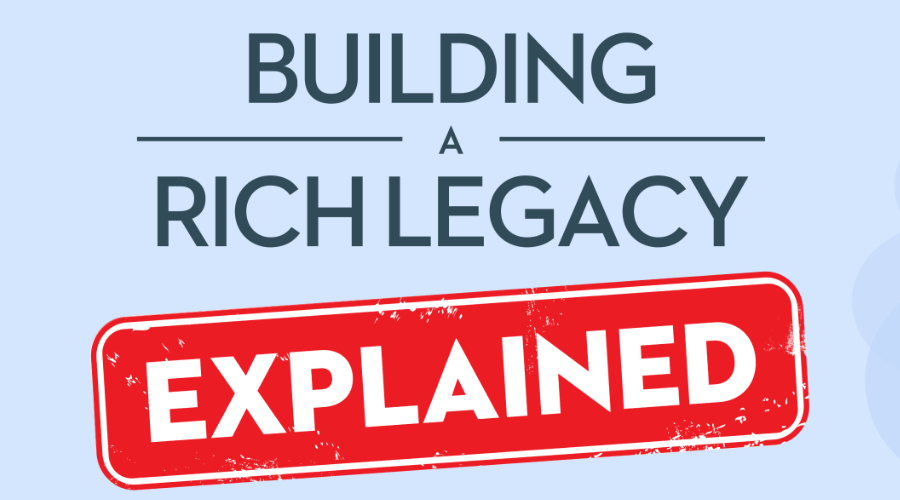Learn what influences these habits and secure your retirement finances
Do you remember those days when you took up an after-school job and started earning for the very first time in your life? Did that hard-earned paycheck make you starry eyed and hopeful about your first car, first home or some other life goal? The fact is that as soon as we start earning, we begin chasing various milestones, sometimes even before we embark on our professional journeys. Whether it is buying vehicles or homes, raising a family, providing for children or parents, or seeking a comfortable, secure and happy retired life, your goals may vary at different stages of your life. However, some of these common questions may have crossed your mind in recent years.
- How much should I be saving for my dream retirement?
- Why should I start saving for retirement early?
- What are the ideal retirement savings for every decade that goes by?
- How do I control my spending habits and manage my savings to fund my golden years?
If you have spoken to a financial planner, a retirement expert, or a money-savvy friend or colleague, chances are that you have come across one of these mantras for retirement finances:
- The 4% rule: If you divide your desired annual retirement income by 4%, the amount you get is what you need to save in order to generate that income.
- Rule of 20: This rule of thumb suggests that you need to save $20 for every dollar in income that you need for your retirement.
- The magic number of $756,000: Recent Canadian retirement savings statistics suggest that Canadians believe they will need an average savings of $756,000 to secure their retirement living.
These are just a few of the indicative rules. Every financial planner or expert will have their own principles to arrive at the ideal retirement savings for Canadians 55+. Before you decide what formula works best for you, let us understand what influences saving and spending habits.
Do savings or spending habits change as you age in Canada?
Whether it is food, clothing, accommodation, household expenses, transportation, recreation, health care or personal care, every generation of Canadians has had its own set of spending priorities and patterns. And within that generation, each individual is unique. While various demographic factors may play their part in this, the generation that you represent may also be influencing your mindset. Here is how the past few generations differ in their decision-making process on saving and spending:
- Baby Boomers: If you were born between 1946 to 1964, you were raised in the post-war environment of employment stability and economic affluence. While baby boomers’ spending habits lean towards housing, transportation, food and insurance, this generation is usually passionate about saving for the future. If you are a boomer who is on the cusp of retirement, make sure that you have a realistic plan to lower or eliminate your high-interest debt (mortgage, loans or credit cards), and free up your income for retirement funding.
- Generation X: If you were born between 1965 to 1980, you have been exposed to unprecedented economic transformations, including a highly fluid job market and the elimination of traditional norms of career or retirement. Many Gen Xers believe that they will work well into their retirement years. The biggest spenders out of all the generations, if you are part of Gen X, you are likely shelling out a significant portion of your income on student loan payoffs, mortgage payments and credit card debt. Since you may have only a few years to build a comfortable nest-egg, consider cutting back on certain expenses and increasing your contribution to retirement savings.
- Millennials: Born in the information age, millennials have grown up in an environment of economic turmoil and experienced the cyclical ups and downs, including the global downturn of 2009. With education debt and housing costs on the rise, and the job market in a constant flux, this generation does not envision a secure future. They believe in saving for short-term goals, instead of long-term ones.
Although your spending and savings habits are broadly defined by the generation that you belong to, retirement finances are not dependent on spending or savings alone. The financial resources available to you during your retirement will depend on how well you balance your decisions between saving, investing, borrowing and spending, especially during your working years.
As shown in the table below, baby boomers (on average) actively budget their finances and focus on making efficient, tax-friendly investments. However, millennials more often focus on achieving their short-term goals by building up savings and reducing debt. Budgeting or investing are not currently very high on their list of financial priorities.
*Figures based on BMO Wealth Management’s 2016 study on financial priorities.
How different life stages influence your spending and saving patterns
No matter what your retirement assessment, the fact is that over the course of your lifetime, your savings and spending habits will hit many peaks and troughs. Your age, life stage, income, number of dependents and several other factors will play important roles in influencing your priorities and determining how much you will save or spend.
Here’s a quick look at the typical saving and spending patterns for each life-stage.
- Your 20s – Early career: Starting out in your career, you may likely be carrying student loan debts and your pay may be entry level. During these years:
- Prioritize the repayments for your education loans, as well as other high-interest debts such as credit cards
- If your new job comes with a pension plan, try and make the maximum contributions
- If you do not have a company-sponsored pension plan, now is a good time to start saving with a TFSA or RRSP, especially if your employer matches your contributions
- This is also a good time to start saving for a down-payment for your first home
- Your 30s and 40s – A home, family and career progression: Typically, by this age, you may choose to marry, buy a home and start a family. It is also the age when your career may be moving in an upward trajectory. However, life may be more complex now. Between tapering off student loans, steady mortgage payments and the ever-increasing needs of a growing family, you will need to tighten up your budget and do the maximum juggling of your finances:
- You may decide to opt for higher risk investments, such as equities, to build your savings faster
- With plenty of years left to ride out any volatility in the market, this is a risk that may be worth considering
- If you want to start saving for your children’s education, this is also a good time to look at RESPs because of the top-up that is available from government grants of up to $7,200
- You may decide to opt for higher risk investments, such as equities, to build your savings faster
- Your 50s – Maximum earning years: These are the years to really start boosting your retirement savings. Your salary or income will typically be at an all-time high, and your children may either be in college/university or already working. Depending on your family situation, you may need to spend on elder care for your parents, or support your children for their weddings or first home down-payments.
- If you maximize your RRSP contributions, consider other registered plans, such as TFSAs that can help in quickly multiplying your savings
- Evaluate other non-registered accounts that can also grow your retirement fund
- With a mix of shares and fixed-income investments, such as GICs, you will be able to avoid market volatility and steadily build your savings
- Your 60s – Pre-retirement: The years leading up to retirement are the time to think about your ideal retirement lifestyle and plan a budget.
- Evaluate if it is beneficial to change your investment portfolio to a more conservative mix, with greater emphasis on fixed-income products
- This could help you avoid any potential volatility
- Decide on when to take the Canada Pension Plan payments
- The longer you can wait, the more money you will receive
- Evaluate if it is beneficial to change your investment portfolio to a more conservative mix, with greater emphasis on fixed-income products
- When you are 65-75 – The busy retirement years: While your salary may stop, you will have more time to indulge in your preferred activities, especially before any age-related physical constraints start creeping up on you.
- Set up annuities or some other form of regular income from your investments to ensure a steady inward flow of finances
- Transfer all the savings in RRSPs to RRIFs when you or your spouse (if younger) reaches 71
- After that, you will have to withdraw a set percentage from your RRIFs every year
- If you are concerned about not having enough saved to live the retirement you envisioned for yourself, consider the CHIP Reverse Mortgage®, a great financial solution to help you live retirement your way.
- When you are 75-85 – Slowing down: By this age, you may be stretching your retirement savings. If your funds have started to dwindle, you will need to find solutions to boost your income. Enhance your retirement income with the help of the CHIP Reverse Mortgage. This will allow you to stay and age in your own home, instead of the expensive and rather disruptive option of downsizing.
- Your Late 80s and beyond – Healthcare: At this stage, one aspect that may put pressure on your retirement finances is health. In case you, or your spouse or partner need to go into a nursing home, or seek in-home care, the expenses may skyrocket. Not only is this an emotional stress, but it will also quickly eat into your savings. With the CHIP Reverse Mortgage you will be able to:
- Continue aging gracefully at home
- Carry out home renovations that address any potential mobility issues
- Pay for necessary nursing care
How to ensure a secure retirement in Canada
You may think that volatile markets, rising health care costs, and uncertain political situations are all factors that contribute to how much you can save for your retirement in Canada. However, experts suggest that it is possible to navigate your way around these complexities, if you start saving for retirement early, and focus on getting a few things right. It is important to make sure you:
- Set realistic goals: Most planners and online calculators overestimate your retirement finances. In reality, the amount of money you need during your golden years depends largely on how much you earned during your working years. Although seemingly counterintuitive, the more you have earned during your career, the less you may need post-retirement in Canada. For example, at a higher earning bracket, you would pay higher taxes, spend more on a professional wardrobe, or eat out more often. After you retire, these expenses are likely to reduce significantly. When you retire, you may decide to slow down, shift your focus on spending time with grandkids, or indulge in the occasional vacation. Hence, your retirement income replacement may not be as high as you think.
- Make the right moves: When you start closing in on your sixties, try to estimate your spending needs. Are you still paying off your mortgage? Do your children or parents need financial assistance? Are you looking to downsize or relocate? While working out these numbers, you may also want to classify them into fixed and flexible, based on the expenses that will persist, vis-à-vis the ones that are optional or can be deferred.
If you have further questions about saving for your retirement, controlling your spending habits, or managing your ideal retirement savings before you stop working, we are here to help.
To find out how much tax-free cash you could qualify for with a reverse mortgage, call us now at 1-866-522-2447 or get your free reverse mortgage estimate now.
































